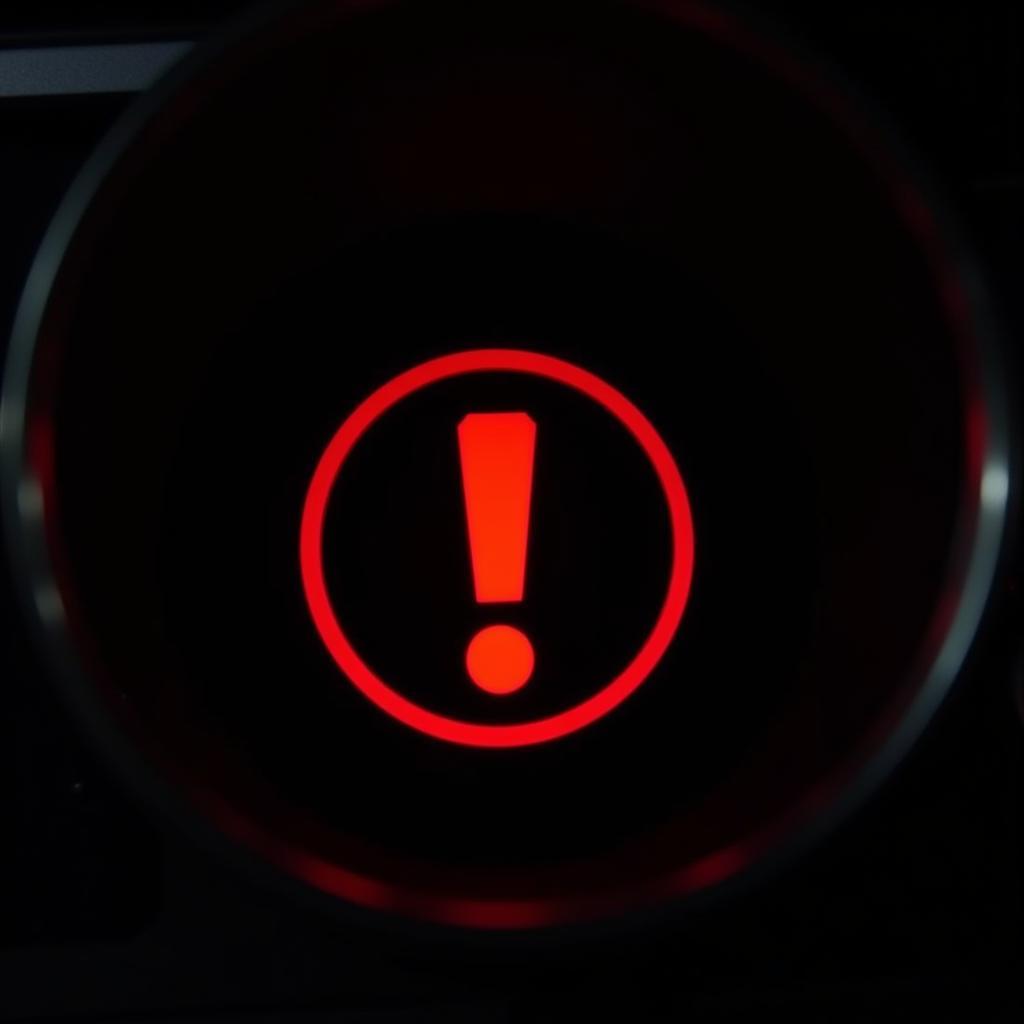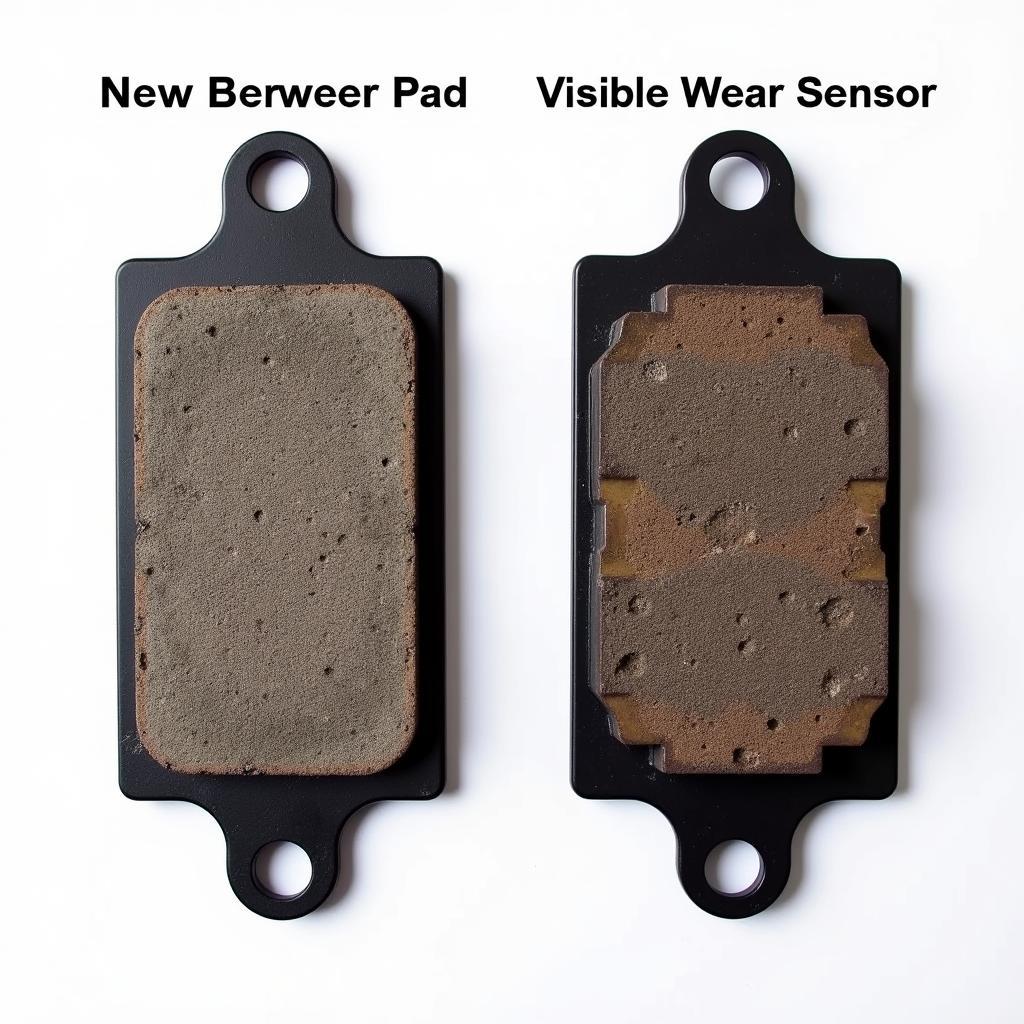The brake warning light on your Audi Q3 dashboard is a crucial safety feature. When illuminated, it signals a potential issue within your braking system that requires immediate attention. Ignoring this warning could lead to reduced braking performance and increase the risk of an accident.
 Audi Q3 brake warning light on dashboard
Audi Q3 brake warning light on dashboard
Understanding Your Audi Q3’s Brake System
Your Audi Q3’s brake system is comprised of several interconnected components working together to ensure safe and efficient stopping power. These components include:
- Brake Pedal: Applying pressure to the brake pedal activates the hydraulic system.
- Brake Master Cylinder: This component converts pedal pressure into hydraulic pressure.
- Brake Lines: These lines carry the pressurized brake fluid to the calipers.
- Brake Calipers: These components house the brake pads and pistons.
- Brake Pads: These pads press against the brake rotors to generate friction and slow down the vehicle.
- Brake Rotors: These metal discs rotate with the wheels and provide a surface for the brake pads to clamp down on.
Common Causes of an Audi Q3 Brake Warning Light
While a malfunctioning brake light bulb can be the culprit, more often, the brake warning light on your Audi Q3 signals a problem within the braking system itself. Here are the most common causes:
1. Worn Brake Pads
Brake pads are designed to wear down over time. As you use your brakes, the friction material on the pads gradually diminishes. When the pads wear down to a certain point, a sensor embedded within the pad triggers the brake warning light, indicating it’s time for a replacement.
2. Low Brake Fluid Level
The hydraulic pressure within your Audi Q3’s brake system is crucial for proper function. If the brake fluid level is low, often due to a leak in the system, it can trigger the brake warning light. Low brake fluid can significantly reduce braking performance, making it crucial to address this issue immediately.
3. Faulty Brake Sensors
Your Audi Q3’s braking system incorporates sensors that monitor various parameters, including brake pad wear, brake fluid level, and the Anti-lock Braking System (ABS). If any of these sensors malfunction, they can send a false signal, leading to an illuminated brake warning light.
4. ABS Issues
The Anti-lock Braking System (ABS) is a safety feature that prevents the wheels from locking up during hard braking, maintaining steering control. If the ABS module or any of its components malfunction, it can trigger the brake warning light.
 Worn brake pad with wear sensor
Worn brake pad with wear sensor
Diagnosing the Brake Warning Light
Determining the exact cause of the brake warning light in your Audi Q3 often requires specialized diagnostic equipment and expertise.
What to Expect During a Diagnostic Service:
- Visual Inspection: A technician will visually inspect the brake system for obvious signs of leaks, worn components, or damage.
- Electronic Scan: Using a diagnostic scanner, the technician can read error codes stored in your Audi Q3’s computer system, pinpointing the source of the problem.
- Component Testing: Depending on the initial findings, the technician may test individual components such as the brake master cylinder, ABS module, or wheel speed sensors.
Remote Diagnostic Solutions for Your Audi Q3
In today’s digitally connected world, remote diagnostics and software solutions are revolutionizing the automotive repair process. If your Audi Q3’s brake warning light is on, remote diagnostic services can provide:
- Convenience: Get your car diagnosed without leaving your home or office.
- Speed: Receive a preliminary diagnosis and recommended course of action quickly.
- Cost-Effectiveness: Remote diagnostics can often help identify minor issues that can be resolved without a costly trip to the mechanic.
How Remote Diagnostics Work:
- Connect: Using a specialized device that plugs into your Audi Q3’s OBD-II port, data from your vehicle’s computer system is transmitted to the remote diagnostic software.
- Analyze: Experienced technicians analyze the data, identify error codes, and assess the overall health of your braking system.
- Report: You receive a comprehensive report outlining the findings, potential causes of the brake warning light, and recommended next steps.
Preventative Maintenance: Keeping Your Brakes in Top Shape
Proactive maintenance is key to ensuring the longevity and reliability of your Audi Q3’s brake system. Adhere to these preventative measures:
- Regular Brake Inspections: Schedule a thorough brake inspection at least once a year, or more frequently if you drive in harsh conditions.
- Timely Brake Pad Replacement: Don’t wait for the brake warning light to illuminate. Consult your owner’s manual for recommended brake pad replacement intervals.
- Brake Fluid Flush: Over time, brake fluid can absorb moisture, reducing its effectiveness. Have your brake fluid flushed and replaced every two years or as recommended by your manufacturer.
- Quality Brake Parts: When it comes to brake components, never compromise on quality. Use genuine Audi parts or reputable aftermarket brands.
 Mechanic performing a visual inspection of Audi Q3 brakes
Mechanic performing a visual inspection of Audi Q3 brakes
Conclusion
Addressing a brake warning light promptly is crucial to maintain your safety and the performance of your Audi Q3. While remote diagnostics and software solutions can provide convenient initial assessments, always consult a qualified mechanic for a thorough inspection and repair. Remember, regular preventative maintenance is the most effective way to prevent costly brake repairs and ensure the continued safety of your vehicle.
FAQs
1. Can I continue driving my Audi Q3 with the brake warning light on?
It’s highly discouraged to drive with an illuminated brake warning light. It indicates a potential problem with your braking system. Have your vehicle inspected by a qualified mechanic immediately.
2. How much does it cost to replace brake pads on an Audi Q3?
The cost of brake pad replacement can vary depending on factors such as labor rates and the type of brake pads used. On average, expect to pay between $150 to $300 per axle.
3. How often should I check my Audi Q3’s brake fluid level?
It’s a good practice to check your brake fluid level at least once a month and top it off if necessary. Refer to your owner’s manual for the location of the brake fluid reservoir and recommended fluid type.
4. What is the difference between the brake warning light and the ABS light?
The brake warning light typically illuminates as a red circle with an exclamation mark, indicating a general issue with the braking system. The ABS light, often appearing as the letters “ABS,” signals a problem specifically with the Anti-lock Braking System.
5. Can I add any type of brake fluid to my Audi Q3?
No, using the incorrect brake fluid can damage your braking system. Consult your owner’s manual or contact your Audi dealer for the recommended brake fluid type for your specific model.
